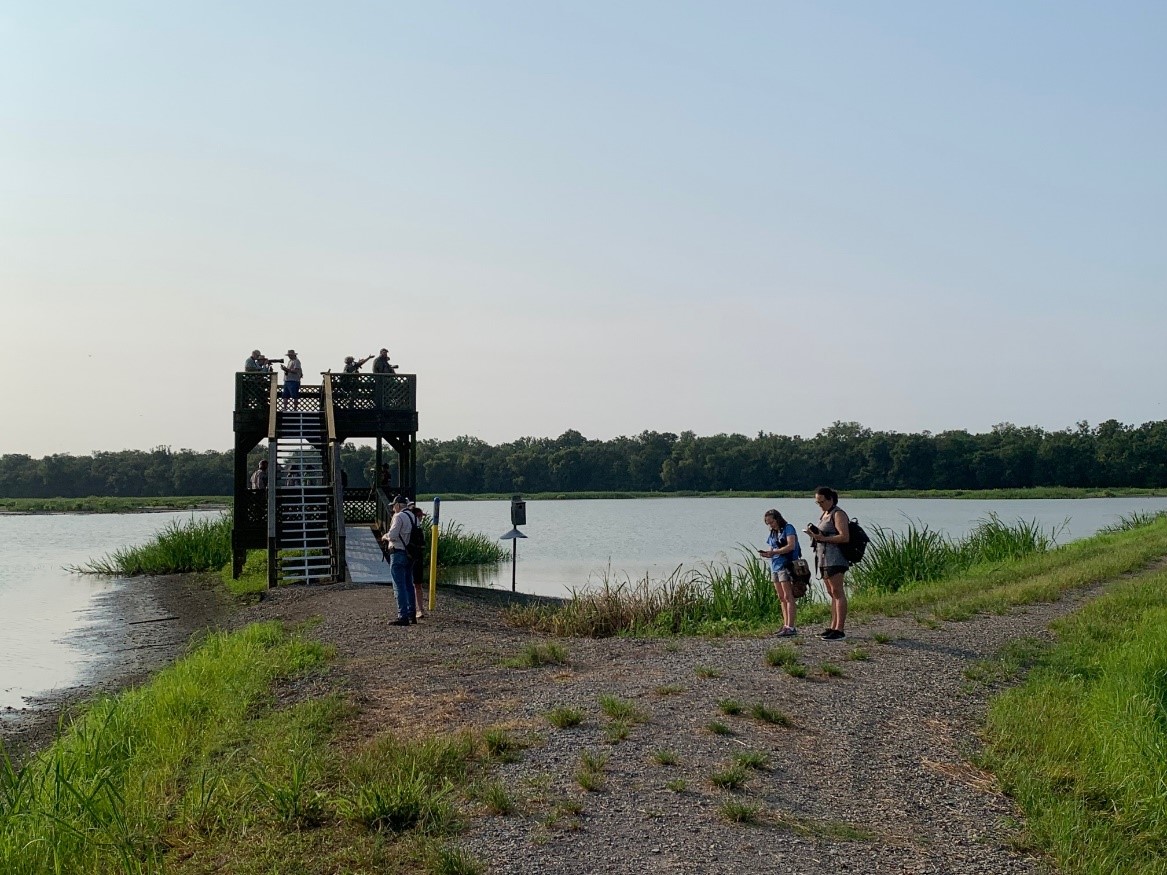
Bird tower at Sherburne WMA South Farm during the Wood Stork Viewing Event.
There’s not a better place in Louisiana to enjoy viewing wading birds, including the wood stork, than the Louisiana Department of Wildlife and Fisheries’ (LDWF) Sherburne Wildlife Management Area (WMA) South Farm.
LDWF Sherburne WMA and U.S. Army Corps of Engineers personnel combined to enhance the experience with a Wood Stork Viewing Event last Saturday (July 31) at South Farm. A total of 86 people flocked to South Farm for the event as staff from LDWF and the Corps of Engineers were on hand to help identify the birds, discuss management and guide visitors around the area. The 86 visitors were the most at the event since its inception several years ago.
In addition, the bird tower on South Farm was renovated the week before by LDWF and Corps of Engineers personnel, allowing the public to get a bird’s eye view of the area.
“Sherburne and South Farm provide unique Louisiana experiences,’’ LDWF Secretary Jack Montoucet said. “We are so proud we can invite the public to this viewing so they can see the wood stork and other birds associated with our state. I thank our hard working staff and our partners at the Corps of Engineers for putting on this special event.’’
Those attending not only were able to see the wood stork but also other wading birds, including the American white ibis, glossy ibis, black-necked stilts, double-crested cormorants and great blue herons, along with other species.
The wood stork is the only stork native to North America. These large wading birds (up to 4 feet tall with a 66-inch wingspan) are an indicator of condition of our nation’s wetlands.
Wood storks and other wading and shore birds can be viewed in this area as they are attracted to feed in the South Farm’s water management units. The South Farm includes a number of large moist soil impoundments managed by WMA staff to provide a diverse food source of seeds, invertebrates and amphibians that are consumed by these birds.
The impoundments are drawn down or dewatered in mid-summer to enhance growth of wetland plants for wintering waterfowl. This drawdown provides mud flats and very shallow water with concentrated prey for birds like shorebirds (sandpipers) and wading birds (egrets, herons, roseate spoonbills, storks, and ibises). Impoundments are flooded in fall and early winter to provide habitat for water birds with emphasis on waterfowl.
For more information on Sherburne WMA, go to https://www.wlf.louisiana.gov/page/sherburne.
